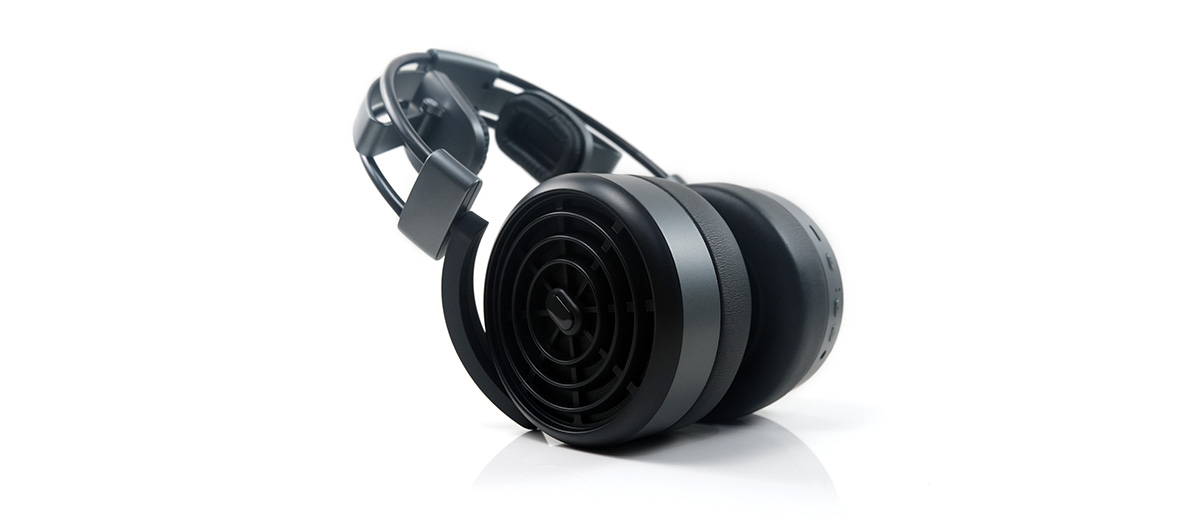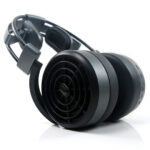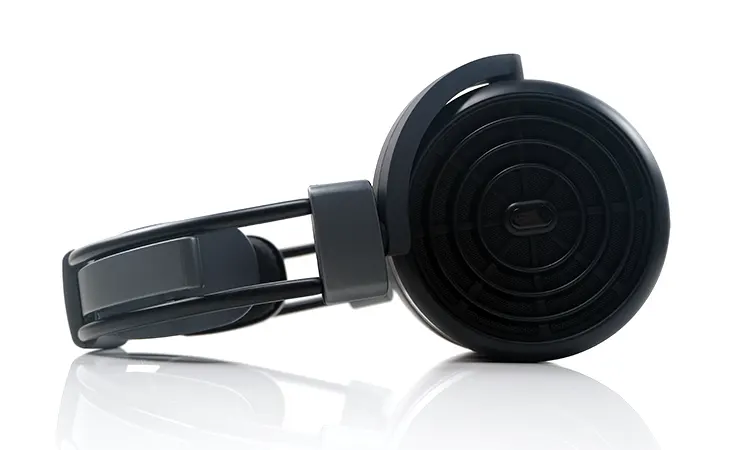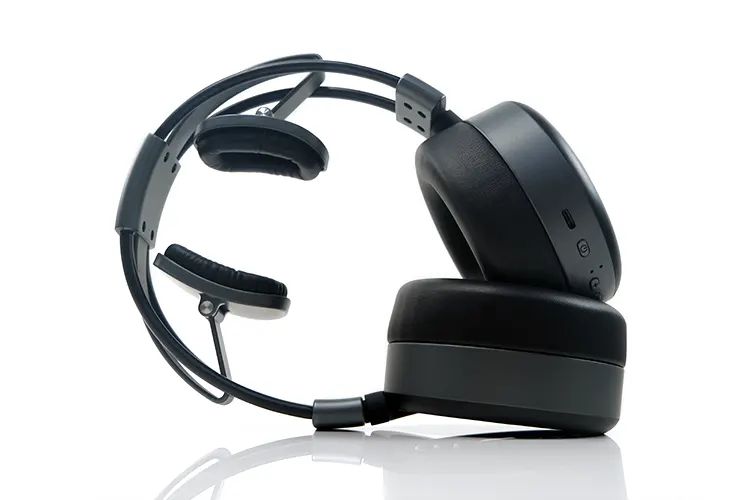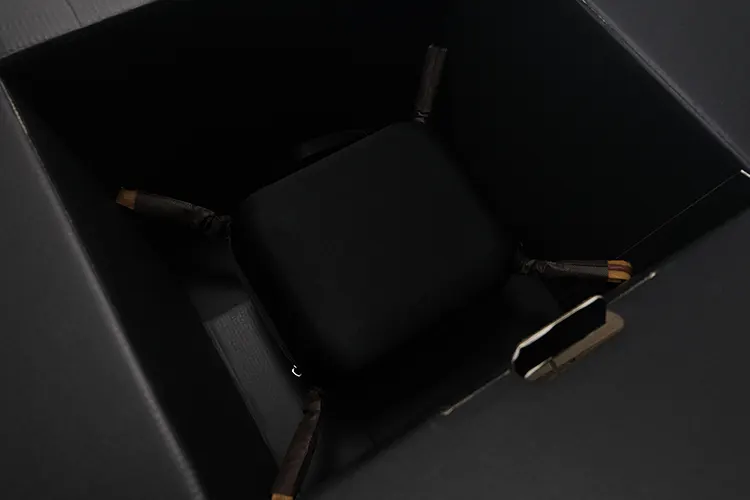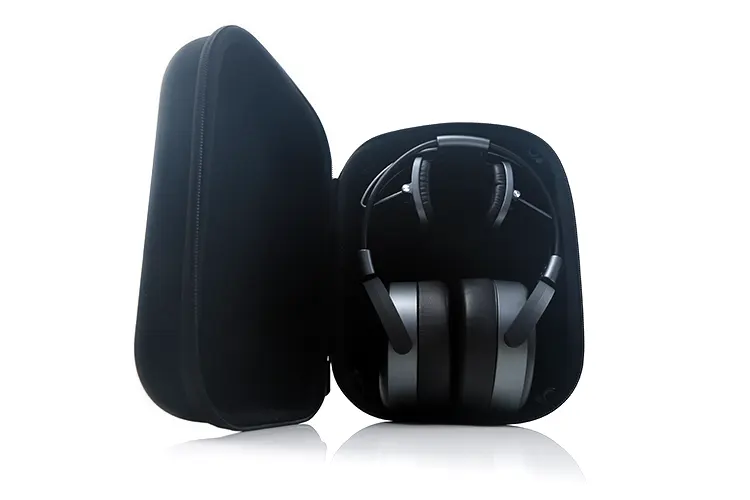Today, we review the Sineaptic SE-1, which is a set of affordably-priced mass-manufactured open-back multipoint wireless ribbon driver headphones. It is priced at $199 SRP.
Disclaimer: This was sent to us as a sample in exchange for our honest opinion. Headfonics is an independent website with no affiliate links or services. We thank Sineaptic for its support.
You can click here to learn more about the wireless headphones we have previously assessed on Headfonics.
Note, that this 2-page post follows our current scoring guidelines which you can read in more detail here.
Hot after the open-source PLOOPY Headphones I have another unusual headphone to review called the Sineaptic SE-1.
However, this is a very different approach from PLOOPY since Sineaptic mass-produces as opposed to cottage brew 3D Print and has opted for wireless instead of purely wired.
Perhaps the highlight of the SE-1 is the use of a which up to this point has been the reserve of some very high-end headphones such as the RAAL SR-1b.
There is nothing new about ribbon drivers, they have been around for a long time and are highly regarded among purists. However, what makes this one unique is that the SE-1 is priced at just $199. That’s a ribbon driver wireless open-back set of headphones for not very much. Has your interest been piqued yet?
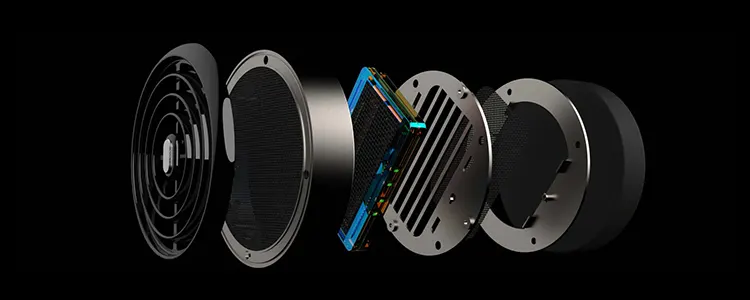
Tech Highlights
Driver
The Sineaptic SE-1 is a Bluetooth-equipped or wireless set of open-back headphones. It uses a dual ribbon array design in each cup which is driven by an internally housed DAC and Class D amplifier capable of a high enough level of current to power each driver.
In brief, a ribbon driver is a horn-free design. Instead, it uses a thin, lightweight, and metalized film ribbon suspended between what is usually a set of very powerful N52 Neodymium magnets.
Once current is sent from the amplifier to the ribbon it develops a magnetic field that in turn attracts and opposes the magnets on either side. This magnetic energy moves the magnetic field and pressurizes the air which in turn produces the sound.
Ribbon drivers differ from AMT alternatives such as HEDD Audio HEDDphone where the diaphragm of an AMT is of a pleated shape similar to a bellows design, (think of an airbag).
However, the net result is similar to what you might expect from some electrostatic driver performances.
Wireless
The wireless aspect of the SE-1 is powered by a fairly up-to-date BT5.2 chipset, (brand not mentioned), though the codec choice seems limited to just AAC, (Apple), and SBC (PC/Android) with no aptX or LDAC capability.
I presume this is both license, (aptX), and ideal battery life driven, (LDAC) so, much will depend on just how good the internal driver and amplifier are at overcoming the lower codec compressed data limitations.
It is, however, multipoint capable meaning you can hook it up to more than one BT transmitter. I regularly had it connected to both an iPhone 14 and a Samsung S23 Ultra without issues.
In the manual, it indicated you can get up to 15 hours in wired mode on the SE-1 though the website stated 13 hours in wireless mode. Charging time is around 2 hours from zero to 100%.
Still, this is a lot higher than the HIFIMAN Deva Pro R2R Bluemini module rated at just 8 hours but you have to remember the R2R Bluemini is LDAC and aptX-HD capable.
For good measure, Sineaptic has also equipped the SE-1 with a MEMS microphone and call controls so you can also use the headphones wirelessly for voice or voice-assisted commands.
Design
Visually, the SE-1 is a relatively tall headphone, made almost entirely of good-quality hardened plastics with a gunmetal-colored finish. Everything else is a mix of synthetic leather and some lightweight flexible plastic enclosures for the headband stems. The whole ensemble weighs in at a fairly hefty 412g.
The height is primarily from a 3-D wing-type headband assembly meaning there is no sliding adjustment on the headband itself but rather a pressure-aware wing system of pads that gently press on the top of your head.
If you think of classic Audio Technica headphones such as the ATH-AD2000 or the ATH-A900X LTD then you will be very familiar with how the SE-1 headband pressure system works.
The cup design uses a traditional round form factor with a fairly wide circular inner opening on the hybrid pleather and fabric pads. These are fairly deep cups given they house additional electronics and controls for wireless operation.
The outer grills have a thick but attractively designed circular outer and starlike stem pattern just under with a perforated grill protecting the drivers.
Aesthetically, the SE-1 looks right on for its price point in some respects. For example, the synthetic leather on the pressure pads is that cheap crinkly stuff you find on $5 pads. In other ways, it does quite well for build quality with a noise-free articulation and very little flex feedback from any of its joints.
Comfort
The SE-1 is reasonably comfortable for a 400g+ headphone but the pressure dissipation is more vertical than lateral.
I am not a huge fan of the wing system for pressure distribution because they so often have little resistance to downward pull meaning the cups tend to rest a bit heavy on the top of your ear.
The SE-1 headband itself has no adjusting mechanism so you are very reliant on the wing pads holding everything in place. And to be fair they do a reasonable job but not enough to do away with that ear-resting sensation.
Lateral clamping is ok but a swift shake of the head can displace the SE-1 a little but not enough to be concerned it will slide off. An adjustable pressure strap might have been better here but that would require a complete change in the headband system making it a tall order at this price point.
The replaceable hybrid pleather and fabric pads are comfortable and spacious. The memory foam is not too mushy or soft with a decent amount of contact on the side of the head to stay in place without creating discomfort.
Just as an FYI, Sineaptic has included an additional set of pads which is a nice touch since I tend to find synthetic leather can have a short shelf life in the tropics. I would have also liked to have seen the 3D Wing pads replaceable as they are vital to the SE-1’s functionality.
Stock Cable
Although the SE-1 is pitched as a wireless headphone you can use it as a wired headphone via its AUX port, (and AUX mode).
You get two cables in the box, a USB-C to USB-C cable for charging and a standard 3m AUX TRS 3.5mm cable for standard headphone PO output usage with amplifiers of your choice.
Sineaptic states that the AUX mode wired option has an improved battery life of around 15 hours and once you do go into AUX mode the wireless option automatically turns off giving you what feels like a passive amplification mode but in reality, it is still going through the internal amplifier.
The difference between the performance of the AUX mode and wireless is quite easy to pick out. You can read about the differences in more detail on page 2 of this review but suffice to say I found the tonal quality of the wireless mode more pleasing.
Controls
The SE-1’s control suite is relatively simple for a modern set of wireless headphones. You get three buttons in total and all are multifunctional for both audio and call/voice assistant management.
All three buttons are slightly raised rather than flush which makes a big difference when trying to operate the headphones unsighted. There is no ANC here given it’s an open-back design so that is one less button to locate.
Audio control functionality includes power, playback controls, and volume levels. The SE-1’s AUX mode automatically kicks in when you plug in the cable with the wireless side of the headphone feature suite disabled.
Call functionality is more in-depth with the ability to answer, decline, and switch between calls as well as a call back function. You can also activate the likes of Siri on iOS platforms with several clicks.
Packaging & Accessories
There are two aspects to the SE-1 packaging and accessories. The more regular aspect is the tidy branded zipper carry case which fits the headphones and accessories and the second is the outlandish but innovative ‘AirGuard’ package technique for the retail box.
Let’s start with the latter. The SE-1 retail box is huge, and I mean massive for a set of headphones of this size. I would say the biggest I have ever received. It is also very empty save for the carry case strategically suspended in mid-air by some flexible straps hooked to the inside of the box.
Sineaptic calls this AirGuard and it is designed to protect those very fragile ribbon drivers during carriage. It does this excellently. I gave it a nudge before unstrapping it and it is suspended almost perfectly.
At the same time, I suspect this method of shipping is going to be very costly to the bottom line of the business and may also be prohibitive for returns and repairs where shipping is priced on volumetric measurements.
The branded SE-1 zipped carry case is more regulation-type and provides a measure of protection though I wouldn’t throw it around too much given these are ribbon drivers. There is enough space also for a small synthetic material pouch, the 2 cables, spare pads, and the small manual.
Click on page 2 below for our sound impressions of the SE-1 and its wireless performance

